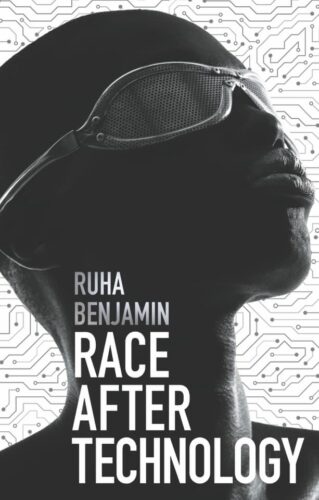If you’ve ever watched the Netflix series Black Mirror, you’re well acquainted with the on-screen consequences of artificial intelligence gone rogue, invasive medical technologies, and intrusive surveillance methods. The show acts as a satirical commentary on both the role that technology plays in our society and the role society plays in creating technologies that have unintended, often destructive outcomes. After all, whose problems are technologies meant to solve, and whose problems do “innovative solutions” exacerbate?
This is just one question that Ruha Benjamin, sociologist and associate professor of African American Studies at Princeton University, posed to students in her course, “Black Mirror: Race, Technology, and Justice,” taught in Fall 2020. The course drew its inspiration from her most recent book, Race After Technology: Abolitionist Tools for the New Jim Code.
In her work, Benjamin analyzes how the history of racial coding—a system that facilitates white supremacy—is deeply intertwined with discriminatory design. She walks readers through examples of discriminatory design—beauty algorithms that favor whiteness, soap dispensers that fail to recognize dark skin, and rating systems used to track social standing—prompting us to think about the social systems that allow these technologies to exist in the first place. Benjamin gives a name to the employment of technologies that, regardless of intent, amplify racial hierarchies: “The New Jim Code.”
“The New Jim Code” isn’t simply defined by the existence of discriminatory technologies. Benjamin structures her book around four major components that describe this era: engineered inequity, default discrimination, coded exposure, and technological benevolence. The strongest part of her analysis is her reliance on storytelling to engage readers and stress the tangible consequences of discriminatory design.
When asked what message she hoped her students took away from her course, Benjamin articulated the importance of human experience. “[W]e have to take stories as seriously as we do statistics… speculation is not just what happens in books, films, and science fiction, but… the technologies that we use and build are the materialization of someone’s imagination,” she said. Through her analysis of lived experience and pop culture references, readers are able to recognize the racialized social hierarchy that decides whose problems get solved.
Benjamin concludes her book with an important chapter describing ways to fight the New Jim Code. We must both recognize the oppressive social systems that have led to a “default” of discriminatory design and act to dismantle them. A large part of this responsibility lies with students: the future leaders of STEM fields that have been defined by long histories of racism. Benjamin is an advocate for STEM education reform in this regard. “I’d love more STEM students to understand that their disciplines are located in a hierarchy of knowledge, where some ways of codifying and understanding the world… trump and displace other humanistic and experiential ways of knowing,” Benjamin said. “Part of working in solidarity with people and communities who are most harmed by unjust systems means engaging in the varied forms of knowledge they bring to the table.”

